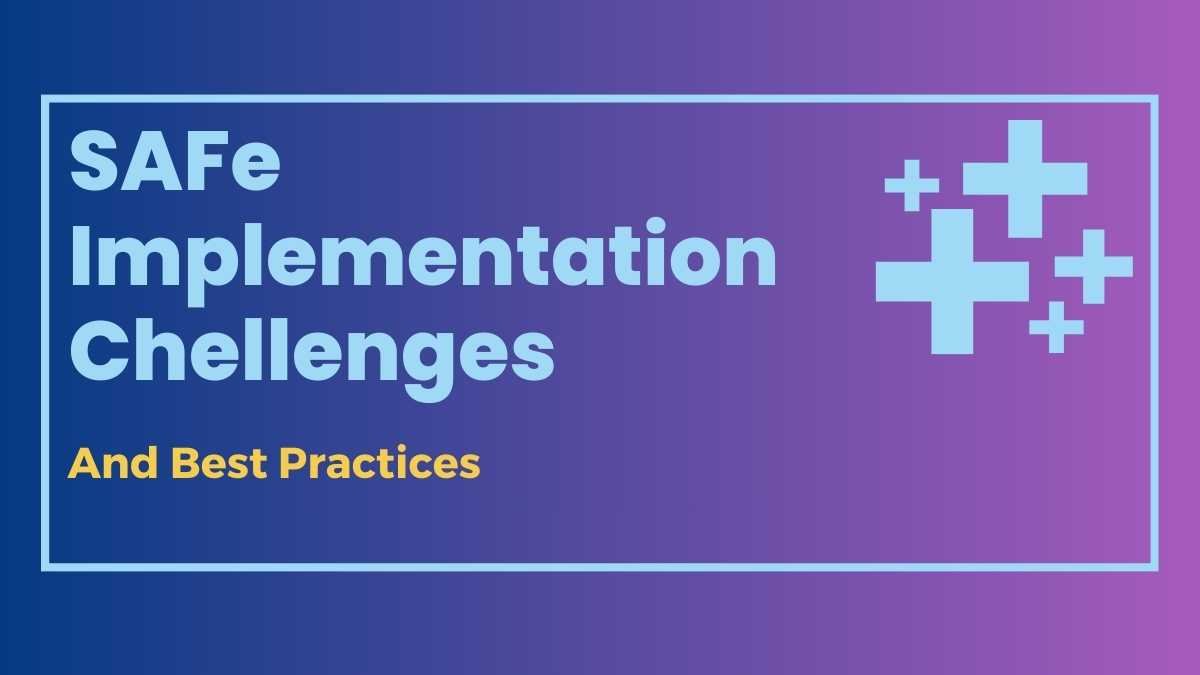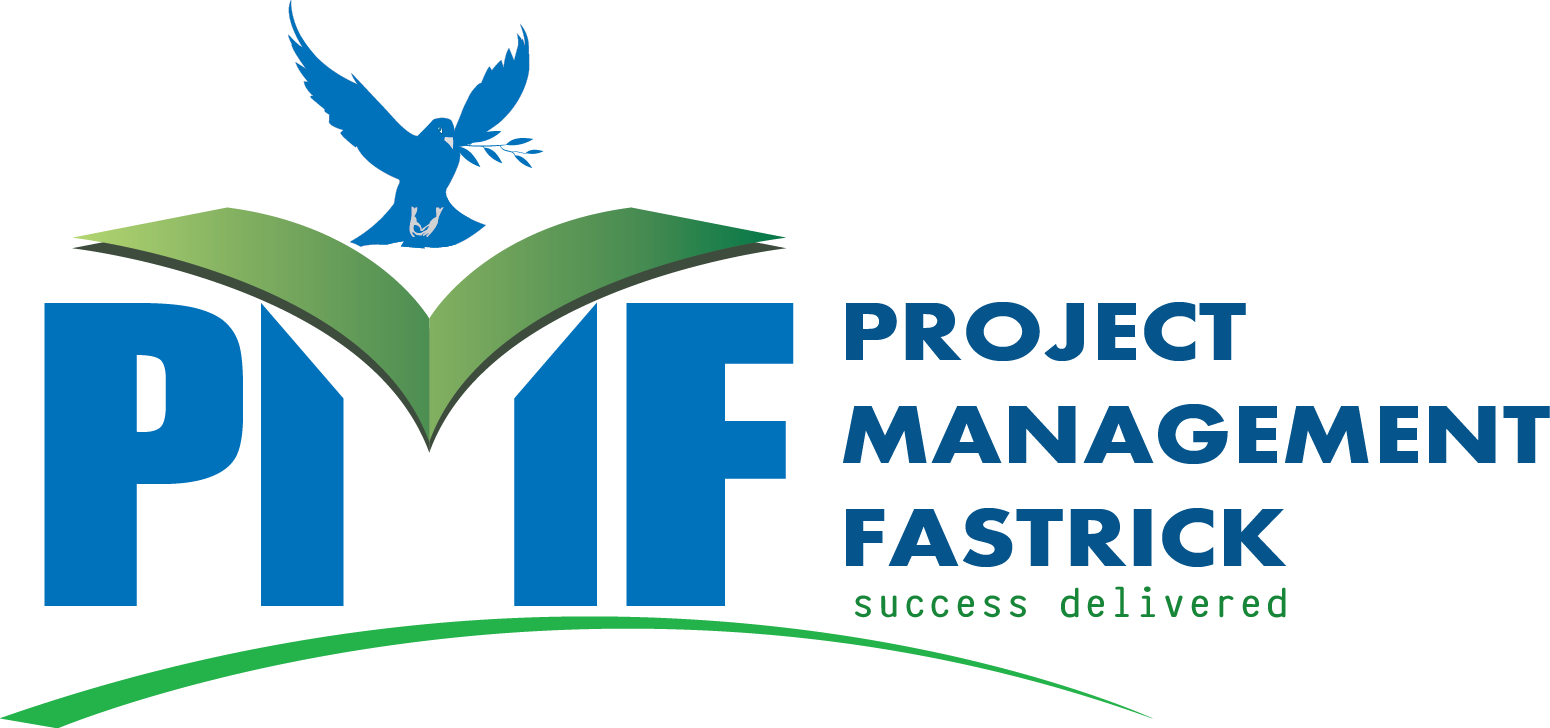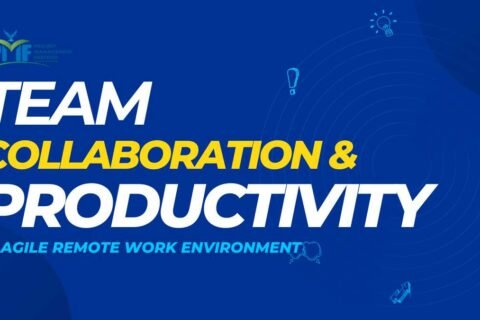
Implementing SAFe in Healthcare: Challenges and Best Practices
Abstract
This research paper delves into the implementation of the Scaled Agile Framework (SAFe) within the healthcare sector. The focus is on identifying the unique challenges faced during the adoption process and highlighting the best practices that contribute to successful implementation. The study draws on case studies, surveys, and expert interviews to provide a comprehensive analysis of SAFe in healthcare.
Keywords
Scaled Agile Framework (SAFe), Healthcare, Agile Transformation, Implementation Challenges, Best Practices, Organizational Change, Case Study
Introduction
The healthcare sector is characterized by its complexity, regulatory requirements, and the critical need for high-quality patient care. As healthcare organizations strive for improved efficiency, responsiveness, and quality, the adoption of agile methodologies, particularly SAFe, has gained traction. This paper explores the implementation of SAFe in healthcare, examining the challenges encountered and best practices that facilitate successful adoption.
Background
SAFe is a framework designed to scale agile practices across large and complex organizations. It integrates principles from Lean, Agile, and DevOps to support large-scale transformations. In healthcare, SAFe can help align various teams, streamline processes, and enhance collaboration, ultimately leading to better patient outcomes and operational efficiency.
Literature Review
The literature review covers existing research on agile and SAFe implementation in various sectors, with a focus on healthcare. It examines the theoretical foundations of SAFe, its components, and its potential benefits in healthcare. The review also identifies gaps in current research, particularly concerning the unique challenges of implementing SAFe in the healthcare industry.
Methodology
This study employs a mixed-methods approach, combining quantitative and qualitative data collection methods. The quantitative data includes performance metrics such as project delivery times, quality metrics, and employee satisfaction scores. The qualitative data comes from surveys and interviews with employees, managers, and executives involved in SAFe implementations in healthcare. Additionally, case studies provide in-depth insights into the implementation process and outcomes.
Data Collection
- Surveys: Distributed to employees, managers, and executives in healthcare organizations that have implemented SAFe.
- Interviews: Conducted with key stakeholders to gain deeper insights into the challenges and successes of SAFe implementation.
- Case Studies: Detailed examinations of SAFe implementations in specific healthcare organizations, focusing on the process, challenges, and outcomes.
Data Analysis
- Quantitative Analysis: Statistical analysis of survey data to identify trends and correlations.
- Qualitative Analysis: Thematic analysis of interview transcripts and case study data to identify common themes and insights.
Case Studies
Case Study 1: HealthFirst
Background
HealthFirst, a large healthcare provider, implemented SAFe to improve coordination among its various departments and enhance patient care services.
Implementation Process
HealthFirst began with a pilot program in one department, gradually scaling up to the entire organization. Extensive training and workshops were conducted to familiarize employees with SAFe principles and practices.
Outcomes
The implementation resulted in improved project delivery times, enhanced collaboration among teams, and increased employee satisfaction. HealthFirst also reported better alignment with regulatory requirements and improved patient care outcomes.
Case Study 2: MedCare
Background
MedCare, a global healthcare organization, adopted SAFe to streamline its software development processes and improve compliance with regulatory requirements.
Implementation Process
MedCare employed a phased approach, starting with a few key departments and gradually expanding to the entire organization. The implementation included extensive training, coaching, and the establishment of agile teams.
Outcomes
The adoption of SAFe led to higher quality software releases, reduced time-to-market, and better alignment with business goals. MedCare also saw significant improvements in regulatory compliance and patient satisfaction.
Findings
Challenges in SAFe Implementation
- Cultural Resistance: Resistance to change is a significant barrier, as employees and managers may be accustomed to traditional working methods.
- Complexity of Framework: The comprehensive nature of SAFe can be overwhelming, requiring significant training and adaptation.
- Resource Allocation: Implementing SAFe requires substantial investment in training, tools, and resources.
- Maintaining Momentum: Sustaining the initial enthusiasm and commitment over time can be challenging.
- Integration with Existing Processes: Aligning SAFe with existing organizational processes and tools can be complex and time-consuming.
- Regulatory Compliance: Healthcare organizations must adhere to strict regulatory requirements, which can complicate the implementation of agile practices.
- Patient Safety Concerns: Ensuring that agile practices do not compromise patient safety is a critical concern in healthcare.
Best Practices for SAFe Implementation
- Strong Leadership Support: Leadership must be committed to the agile transformation and actively support the implementation process.
- Comprehensive Training Programs: Providing extensive training to all employees ensures they understand SAFe principles and practices.
- Phased Implementation: Gradually rolling out SAFe in phases allows for adjustments and learning along the way.
- Clear Communication: Transparent and frequent communication helps manage expectations and address concerns.
- Engagement of All Stakeholders: Involving all stakeholders, including clinical and non-clinical staff, ensures broad support and collaboration.
- Continuous Improvement: Regular retrospectives and feedback loops enable organizations to continuously refine and improve their SAFe practices.
- Adaptation to Regulatory Requirements: Ensuring that SAFe practices are adapted to meet regulatory requirements is crucial for compliance and patient safety.
- Focus on Patient Outcomes: Keeping the focus on improving patient outcomes helps align agile practices with the core mission of healthcare organizations.
Discussion
The findings suggest that while SAFe offers significant benefits for healthcare organizations, its successful implementation depends on several critical factors. Strong leadership support, comprehensive training programs, and a phased implementation approach are essential for overcoming the challenges associated with SAFe adoption. The case studies highlight the potential of SAFe to transform healthcare organizations by enhancing alignment, improving project delivery times, and increasing employee satisfaction.
Implications for Practice
- Strategic Planning: Healthcare organizations should develop a clear implementation strategy, including phased rollouts and pilot programs.
- Training and Development: Investing in comprehensive training programs is crucial for building the necessary skills and knowledge.
- Change Management: Effective change management practices are essential to address cultural resistance and ensure smooth transitions.
- Performance Measurement: Establishing clear metrics and KPIs helps in monitoring progress and measuring the impact of SAFe implementation.
Conclusion
SAFe provides a robust framework for scaling agile practices in healthcare organizations. Its structured approach facilitates alignment, improves project delivery, and enhances the quality of deliverables. However, successful implementation requires overcoming cultural resistance, managing the complexity of the framework, and ensuring adequate resource allocation. With strong leadership support and a commitment to continuous improvement, healthcare organizations can achieve significant benefits from adopting SAFe.
Future Research
Future research could explore the long-term impact of SAFe implementation on organizational performance, the role of leadership in sustaining agile transformations, and the application of SAFe in different healthcare contexts. Additionally, comparative studies between SAFe and other scaling frameworks could provide valuable insights into the most effective strategies for large-scale agile adoption in healthcare.
References
- Scaled Agile Framework. (2020). “SAFe 5.0 Introduction.”
- Leffingwell, D. (2016). “SAFe 4.0 Reference Guide: Scaled Agile Framework for Lean Software and Systems Engineering.”
- Knaster, R., & Leffingwell, D. (2018). “SAFe Distilled: Applying the Scaled Agile Framework for Lean Software and Systems Engineering.”
- Rigby, D. K., Sutherland, J., & Takeuchi, H. (2016). “Embracing Agile.” Harvard Business Review.
- Dikert, K., Paasivaara, M., & Lassenius, C. (2016). “Challenges and success factors for large-scale agile transformations: A systematic literature review.” Journal of Systems and Software.






